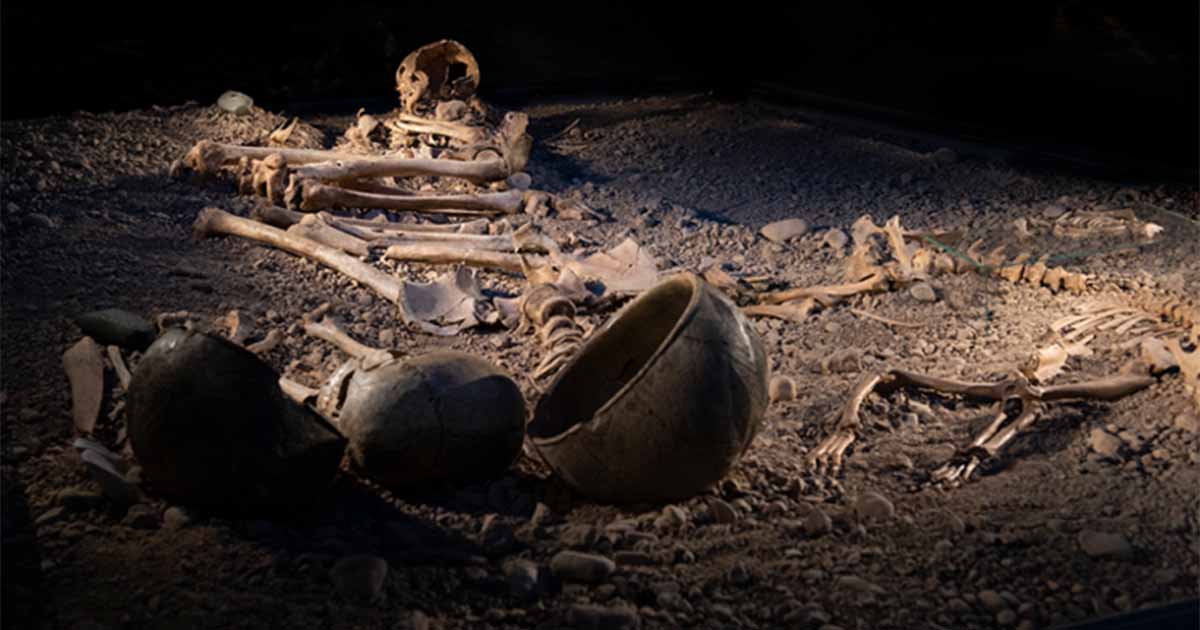Bacterial Diseases Were A Lethal Threat During the Stone Age
Bacterial poisoning via food and water – but also via contact such as kisses – caused a lot of suffering during the Stone Age. Diseases that today can be treated with antibiotics were then fatal, a new study shows.
Living With Disease in the Stone Age
People living close together and not having access to antibiotics sound like a nightmare. Yet, this is how we spent much of our history and prehistory. A new international study coordinated from the Centre for Palaeogenetics in Stockholm explores microbes during the Stone Age in Scandinavia.
Different types of microbes are described, both the kind of microbes which are expected in a healthy person, but also several that must have caused pain and problems: Neisseria meningitidis that spreads through close contact between humans – for example when kissing, Yersinia entrecolitica that is often picked up from contaminated food and water, and Salmonella enterica that is a common cause of today’s food poisonings.
- Viking Drug Use: From Riotous Parties to Berserker Fury
- Huge 500-Year-Old Longsword Recovered from Medieval Grave on Swedish Coast

Color-enhanced scanning electron micrograph showing Salmonella Typhimurium (red) invading cultured human cells. (Public Domain)
“Especially the case of Salmonella enterica shows us how difficult it could be. In a Battle Axe culture burial, Bergsgraven in Linköping, we find two infected individuals, and it is actually possible that we are witnessing their cause of death,” says Nora Bergfeldt at the Department of Zoology, Stockholm University who is conducting her research on bacterial diseases in prehistoric societies.
“This, and other bacterial diseases we have found among the individuals, are easily treated with antibiotics today, but back then they could be lethal.”
- ‘Viking’s Disease’ Hand Condition Traced Back to Ancestral Neanderthals
- Murderous Medicine: Six Strange and Horrifying Ancient Medical Treatments
38 Individuals Screened for Microbes
In the study 38 individuals from farmer contexts as well as from hunter-gatherer contexts have been screened for microbes. Material from Hummerviksholmen in southern Norway (9500 years old) to Bergsgraven in Linköping, Sweden (4500 years old) were investigated. Microbes such as bacteria, and some viruses, have their genetic material organized in DNA, just as we humans do. This is why such microbial DNA can be found in the remains of infected humans. It is this type of microbial DNA the scientists have used to trace bacterial diseases during the Scandinavian Stone Age. Especially the transition from a hunting-gathering lifestyle to a farming one is interesting, as it may be reflected in the bacterial diseases.
“We know when people turned to farming in Scandinavia but we still do not know how this change in lifestyle affected the general health,” says Helena Malmström at the Human Evolution Program, Uppsala University. She has focused much of her research on the lifestyle transition during the Stone Age.
“The more people interacted more possibilities to infect one another occurred. But even if we do encounter bacteria with potential to impact societies such as Yersinia pestis, it is the infections that spread through food that are most prominent across the lifestyles in this study,” says Anders Götherström, who is heading the research project in which this study was conducted. And he sees potential in the research field: “It is amazing for us to be able to start to look into a part of prehistoric societies that has not been possible to research till now.”
Top image: Stone age remnants from Bergsgraven in Linköping. Source: Östergötland Museum/Stockholm University
The article, originally titled ‘Bacterial diseases a lethal threat during the Stone Age’ was first published by Stockholm University.
References
Bergfeldt, N. et al. Mar 2024. “Identification of microbial pathogens in Neolithic Scandinavian humans”. Nature, Scientific Reports.


















Comments
Antibiotics are more than pharmaceuticals. Extracts of Usnea, a lichen which reindeer might eat, is effectively a natural antibiotic. Even copper has anti-microbial activity. There are others too. The Russians are said to have used electronic bioreasonance frequencies which, of course, I'm not supposed to talk about.
The idea of the threat of growing antibiotic resistance is one ultimately promulgated by those who know that the pharmaceutical industry which makes the antibiotics and the bioweapons industry which bioweaponises human pathogens for release on an unsuspecting public are both under their control, as is the media which sells the idea.
The truth is simple. There are those that do not want you to know the truth. And there are also those that simply repeat the same messages innocently enough for various reasons.
No doubt life in the Stone Age was not that great. However, life in the Computer Age is not great either. We are bombarded by misinformation and disinformation, often from apparently reputable sources, while someone merely telling the truth, such as myself, can be seen as a source of misinformation and disinformation instead.
Knowledge has increased, but much knowledge is still questionable.